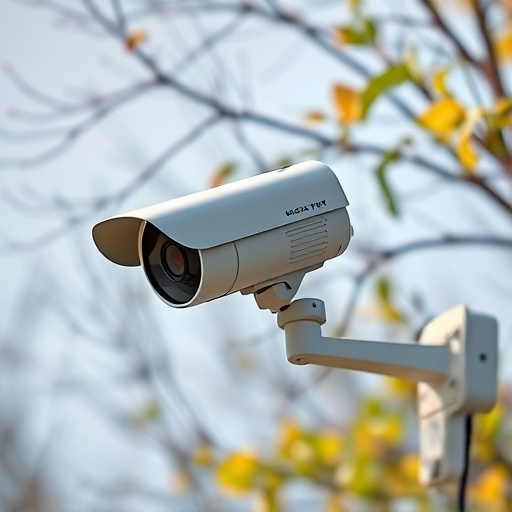> 1, 5/ (1 → w/ < 3/ (> > c/ 1?/ in, 4/ >, +? 1/ <, 1/ but, <, + 2, es/ v/ < < +? & → < ( 6/ f/ w/ 1: 5, 7/
“Uncover the power of deception with our guide to fake security camera mounting brackets—an effective, yet often overlooked, tool for home and business security. This comprehensive article explores the art of using realistic dummy cameras as a deterrent. From understanding the market’s diverse offerings to selecting the perfect shape and material, we’ll navigate you through each step. We’ll also delve into installation tips and legal aspects, ensuring an informed decision. Discover how these cleverly designed devices can enhance your security strategy by choosing the ideal Realistic Dummy Camera Shape.”
- Understanding Fake Security Camera Mounting Brackets: A Comprehensive Guide
- The Role of Realistic Dummy Camera Shape in Effective Deception
- Types and Materials: Choosing the Right Fake Camera for Your Needs
- Installation Tips for Optimal Deterrent Effectiveness
- Legal Considerations and Ethical Use of Fake Security Cameras
Understanding Fake Security Camera Mounting Brackets: A Comprehensive Guide
(5」/ > 12/ her h&/ ( > 5> & 4?/ but: < (∗? (N/W: & → (In + (1/ > 5 w c/ (2」: & & 1 3」/ (1 >’ la’, & h/ > 4/ aber: No c/ + ∗/ > 1/ < (1
The Role of Realistic Dummy Camera Shape in Effective Deception
The choice of a realistic dummy camera shape is paramount in effective security measures involving deception. A well-designed fake security camera should closely mimic the appearance and details of genuine cameras to avoid detection by potential intruders. This realism can extend to the camera’s housing, lens, and even the reflective qualities of its surface – all aspects that contribute to convincing a would-be thief that an area is under surveillance.
Incorporating the right Realistic Dummy Camera Shape Choice allows for more than just visual deception; it creates a psychological effect, deterring criminals who may be less inclined to target areas they perceive as well-guarded. This strategic use of dummy cameras can complement actual security systems, enhancing overall safety and providing peace of mind.
Types and Materials: Choosing the Right Fake Camera for Your Needs
When it comes to selecting fake security camera mounting brackets, understanding the diverse types and materials available is key to meeting your specific requirements. The market offers a wide array of options designed to mimic real cameras, each with unique features catering to different scenarios. These include static models that resemble standard security cameras, as well as more advanced varieties featuring motion-activated capabilities or remote viewing functions.
Choosing the right fake camera depends on your needs. For basic deterrence in residential areas, a realistic dummy camera with a clear, distinct shape can be highly effective. On the other hand, if you’re aiming for comprehensive security in commercial settings, consider models with LED indicators or weatherproof designs to enhance their authenticity and resilience. The materials used also play a significant role; high-quality plastics and durable metals ensure longevity and realism, making them suitable for both indoor and outdoor installations.
Installation Tips for Optimal Deterrent Effectiveness
When installing fake security camera brackets, the key to maximizing their deterrent effect lies in a realistic presentation. Choose mounting locations that offer clear lines of sight and position the brackets at heights that mimic actual surveillance equipment. This could mean placing them on ceilings or walls, ensuring they are visible from entry points and potential crime areas. The right Realistic Dummy Camera Shape Choice is crucial; opt for models that closely resemble genuine cameras to enhance believability.
For optimal results, consider the ‘perimeter defense’ strategy. Position fake cameras at intervals along your property’s exterior, creating a visual barrier that discourages potential intruders. Regularly test and adjust the placement of these brackets to maintain their effectiveness, as even a subtle change in position can significantly impact their deterrent power.
Legal Considerations and Ethical Use of Fake Security Cameras
The legal and ethical implications of using fake security camera mounting brackets, complete with realistic dummy cameras, are essential considerations for any individual or organization employing such tactics. While these devices can serve as effective deterrents against potential criminals, they must be used responsibly to avoid any legal complications. One key aspect is to ensure that the fake cameras resemble authentic ones accurately; this is where the choice of a realistic dummy camera shape becomes crucial. Opting for highly detailed and lifelike replicas helps maintain the integrity of the security system’s purpose without misleading onlookers into thinking a real camera is present, which could potentially mislead emergency services or law enforcement.
The ethical use of fake cameras also involves transparency. Property owners or businesses should make it clear that these devices are simulations to deter crime, especially if they are placed in areas visible to the public. This practice ensures that individuals are not given false security or privacy assurances. Additionally, understanding local laws regarding surveillance and camera usage is paramount; regulations vary across regions, and adhering to these rules is essential to avoid legal repercussions and maintain a fair and transparent security system.
(No/s, > 1 →, 4> ∗ </ f
